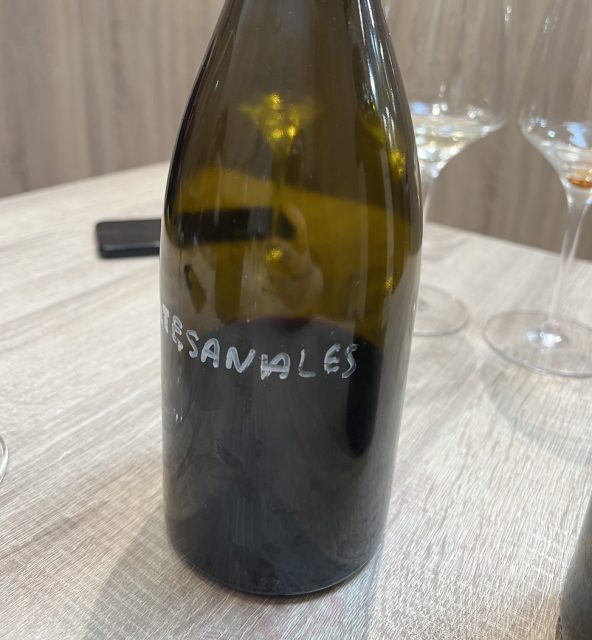This website uses cookies so that we can provide you with the best user experience possible. Cookie information is stored in your browser and performs functions such as recognising you when you return to our website and helping our team to understand which sections of the website you find most interesting and useful.
ProWein: La Rioja Alta explains its ‘tiny plots’ project
La Rioja Alta has explained the philosophy and plans behind its Artisan Vineyards project at ProWein in Düsseldorf.

The concept, which began when the producer began buying up parcels of land mainly in Rioja Alavesa, includes some vineyards which are centuries old.
Beginning in 2021, La Rioja Alta began the purchasing of vineyards where traditional viticulture methods within the region were in danger of disappearing.
According to winemaker Julio Sáenz, he told db the “tiny plots” were bought from local families and growers who had owned or managed the land for many decades.
Dubbed the Artisan Vineyards, the plots of the 2021 vintage are “not just a brand”, as Sáenz explained, but something more special. These tiny plots are “perfectly integrated into the landscape”, he said, and located in strategic places, have not suffered any alteration over the years and are old plants, with twisted, leathery, and ancient physiognomy.
Their nutrition is so scarce, they have deep roots looking for water and food that the soil offers, the sun is often their only food, and the plants respond by giving modest crops, small grains, and loose clusters.
As a result it is produced in a small quantity, as they have seen in the three harvests (2021, 2022 and 2023) that they have been able to carry out from these vines, where Tempranillo predominates.
Herbaceous
Allowing db a sneak peek at the first wine, Sáenz described the wine as “fresh, spicy, fruity, herbaceous and light with soft tannins”.
The 2022 vintage includes “different plots with different kinds of wines”, Sáenz continued, with plans to release the wine before September.
“It is about maintaining the history, heritage and quality of the wines,” he said, explaining how each of the plots was unique to a family history, to the extent that they were named after family members, such as “Beautiful view Juan”, and had been owned by a family for multiple generations.
The plots were often extremely small, for example around 0.06ha, and due to the bespoke elements of each one, they had different harvest times, which made management both timely and intensive. Altitude often also played a significant factor.
But Sáenz said the producer was driven by attention to detail on the project, and a passionate desire to continue to manage and maintain the history of the vineyards of which they were now custodians.
Selective
Guillermo de Aranzabal Agudo, President of La Rioja Alta S.A., added about the project: “Initially we set ourselves the goal of reaching 75 hectares. Today we already have 70 hectares spread over more than 120 plots where the average surface area is around 0.4 hectares.
“To complete this project, we built a small, very selective winemaking cellar that is allowing us to get to know each of these extraordinary plots much better and thus discover their true potential. This space has nine small truncated conical fermentation tanks, with an individual capacity of 6,000 liters, perfect for working separately with the grapes from each site or plot.
“Another question arises: now that we have these unique wines, what are we going to do with them? We still don’t know but, as they told me when I entered the winery 35 years ago… Only worry about making good wines, and if they are good, they will ask you for them.”
“La Rioja Alta, S.A. begins this strategic, long-term project, whose evolution they want to slowly enjoy with their clients and friends, spread across the more than 80 countries in which they currently have a presence with their wines.”
Related news
Land of Plenty: a look at Félix Solís Avantis in Chile
Rioja Alta sees return of cooler vintage with picking underway

